
In an attempt to catch up a bit, I am going to be posting some highlights of some of our work in the fall that I neglected to post. I didn't take pictures of everything as time was short, but I am going to make an effort to do better in this new year! So without further ado, here is some of our continuation of a Language Arts Block with fables...

Told the story of the Ant and the Grasshopper (Aesop) using props we had on hand (the moral should not be told - it is left for the child to come to). A tuft of green wool was the grasshopper and a tuft of black was the ant. The random wool was the food being gathered.

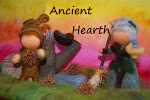










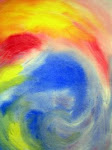



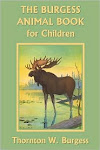





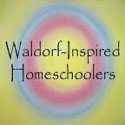
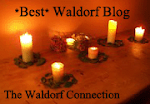









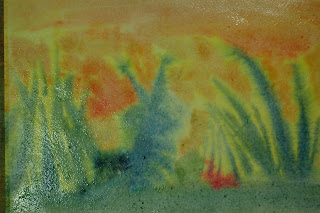










Jen, I was so pleased to see this post because I have really missed seeing your lessons, which are such an inspiration! The paintings are beautiful, and what a great idea to use tufts of wool for the insects.
ReplyDeleteDid you use a particular resource for your fables block that you would recommend?
Yay!! I am happy to see some of what you are doing! This is slowly preparing me for next year! I need to order the curriculum!
ReplyDeleteThank you Cathy & Catherine :) I apologize that I let all of the documentation get away from me and I am going to make it a priority to try to do what I did for Grade 1 last year this 2nd semester.
ReplyDeleteAnyway, as far as stories for fables, my first LA block I pulled mainly from Aesop. There are lots of books out there (through your library or free) and even online the stories can be pulled - just google "Aesop's Fables". You put them in your own words, so in this case, I don't think you have to have a specific book to do this part well. However, I do recommend the book by Sieglinde de Francesaca "Teaching with the Fables: A Holistic Approach" if you need ideas on how to bring the fables alive to your children.
I also like Dorothy Harrer's book, "An English Manual: For the Elementary School". It goes from Grade 2 - Grade 8 and is more detailed than her mathematics manual. It is grammatical and this is typically when grammar is slowly introduced. Eric Fairman begins in grade 1 by using certain colored chalks to represent nouns, verb, adverbs, etc - but the explanations begin in Grade 2.
HTH and thank you for the encouragement to put the lessons out there (((hugs)))
Jen
Hi Jen, Lovely lesson - thank you! I was wondering if you use pastels on your chalkboard drawings? I've just started and my attempts are less than desirable and there is no pop (using Stockmar colour chalk set). I began to wonder if people are using pastels?
ReplyDeleteThank you Anonymous. For those drawings (which are less than stellar) I use the chalks from Germany through Paper Scissors Stone. I think it's a mercurius chalk, but it's not labeled on my box or on the website. They are listed at $6.90 and are the square chalks on the right hand side of the page here (currently out of stock): http://www.waldorfsupplies.com/cgi-sys/cgiwrap/psstone/store/agora.cgi?product=Blackboards_and_Chalk&xm=on
ReplyDeleteBut yes, others do use pastels and I think render a better look to them (like Jenn at Our Little Nature Nest - she's the queen of chalkboard drawings - lol)! I just bought some Sargent Colored Drawing Chalk at amazon that she recommended that I will try out today and share soon. I also am going to make a blackboard as the one I have (from Paper Scissors Stone) is too small and I'm not in love with it, though I love the rounded edges and nice price! HTH and one bit of advice that I'm learning, as I fumble through with my own chalk drawings, is that layers and mixing colors yields a better drawing. It's just a matter of learning how to shade and create shadows and highlights. Kind of similar to using block crayons. A work in progress, for sure!
Love the Glasses
ReplyDeleteThank you so much for sharing! It is such a big help for my work with my daughter.
ReplyDeleteWarm wishes,
Tonya